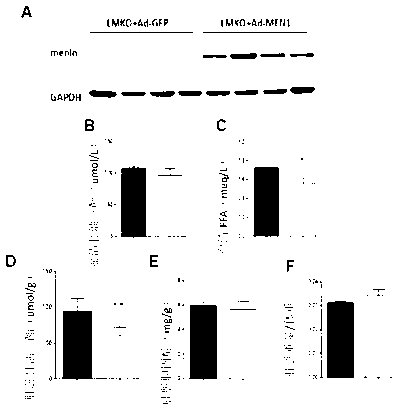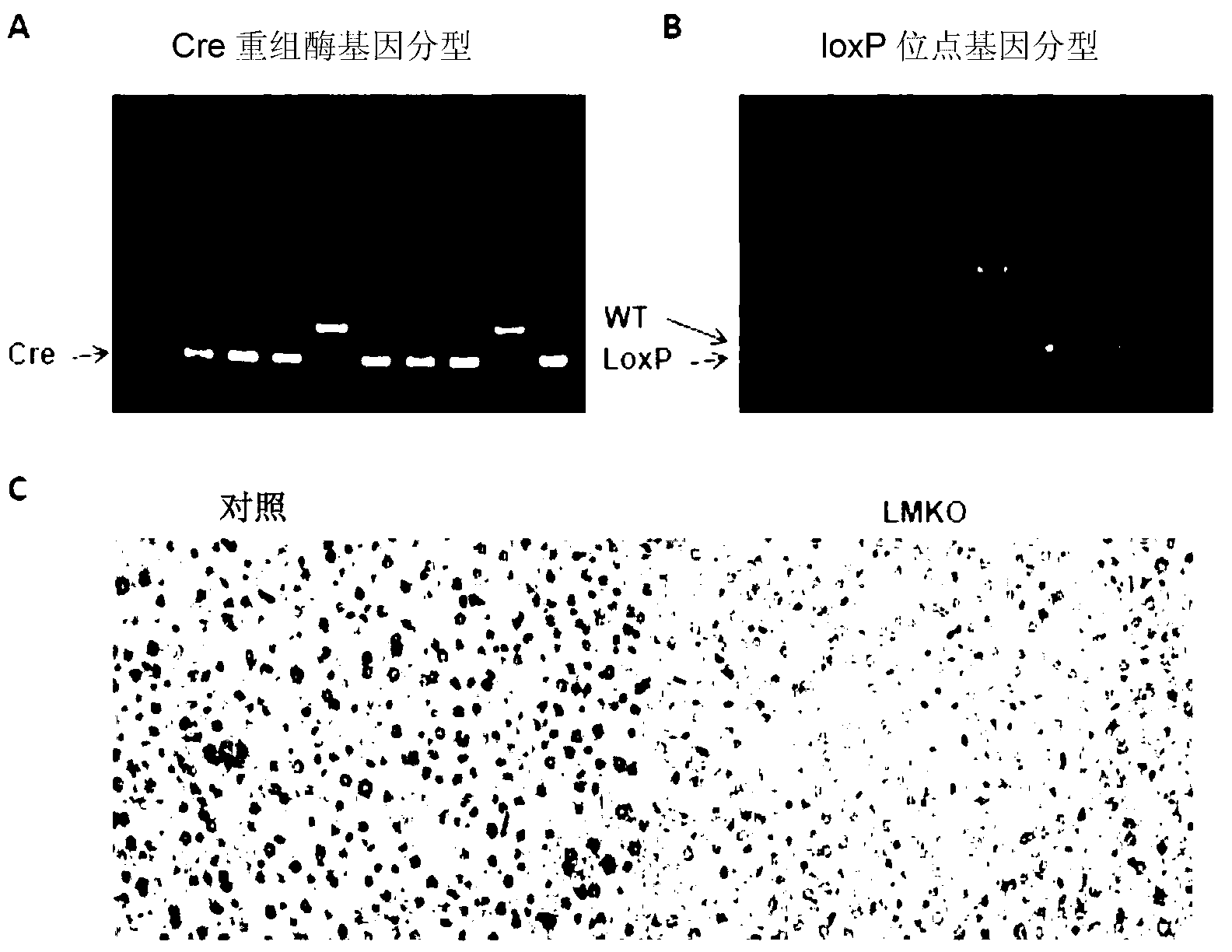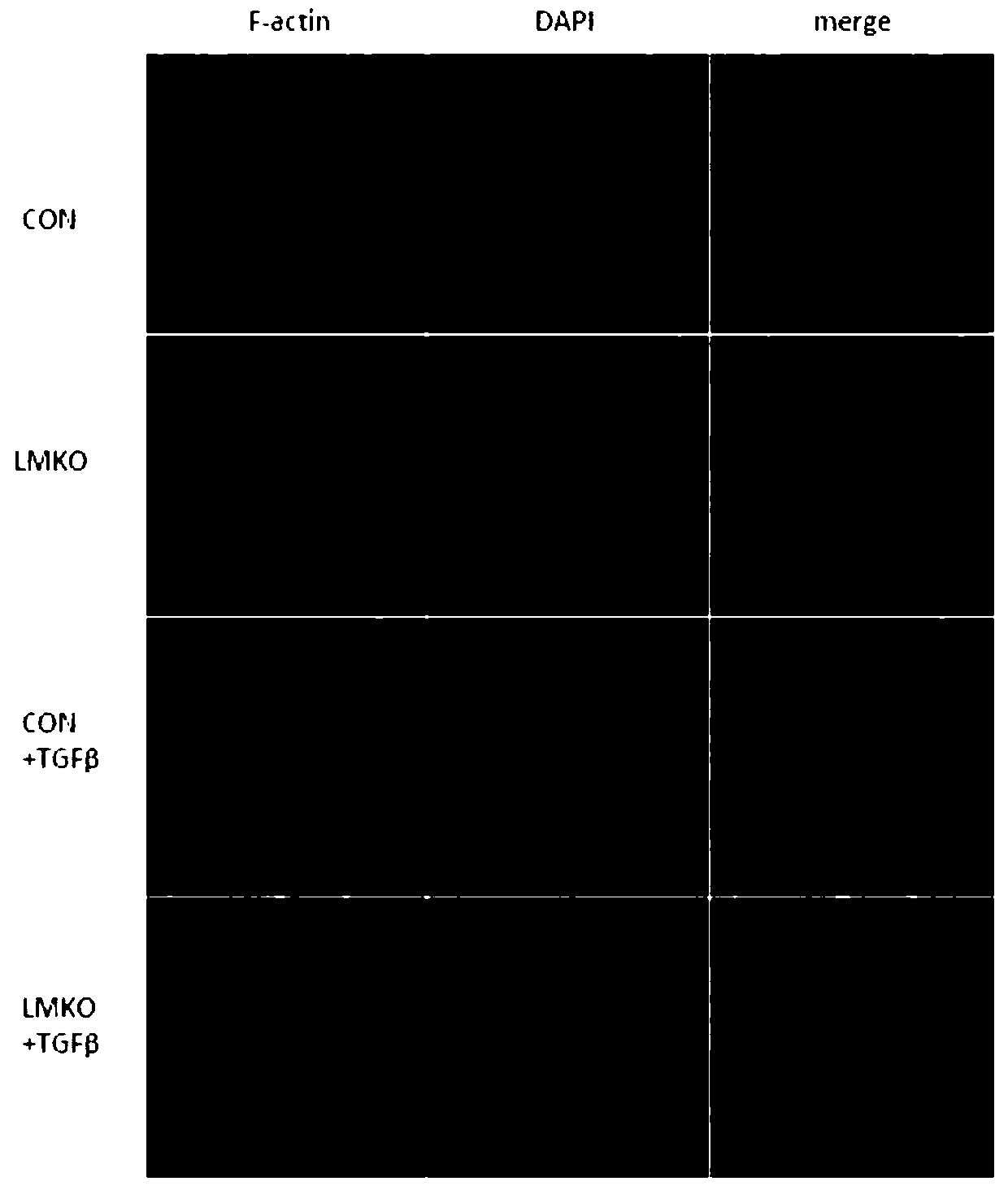Applications of MEN1 gene and encoding protein thereof
A gene and coding technology, which is applied in the field of preparation and screening of drugs for the treatment of liver fibrosis and fatty liver, can solve problems such as translation errors, loss of protein expression, and staying in the primary stage.
- Summary
- Abstract
- Description
- Claims
- Application Information
AI Technical Summary
Problems solved by technology
Method used
Image
Examples
Embodiment 1
[0037] Example 1 Establishment of Liver-specific MEN1 Gene Knockout Mouse Model (LMKO)
[0038] A liver-specific MEN1 gene knockout (Liver-Specific Menin Knockout, LMKO) mouse model was established by the following steps using the Cre / LoxP strategy
[0039] 1) Obtain Cre recombinase transgenic mice (Alb-Cre+) driven by the promoter of albumin gene from Nanjing Model Animal Center.
[0040] 2) Transgenic mice (MEN1loxP / loxP) constructed with LoxP sites at both ends of the MEN1 locus (Locus) were obtained from Jackson Lab.
[0041] 3) Male Alb-Cre+ and female MEN1loxP / loxP mice were crossed, and F1 generation heterozygous mice (Alb-Cre+; MEN1loxP / -) were screened.
[0042] 4) Cross male heterozygous mice (Alb-Cre+; MEN1loxP / -) with female MEN1loxP / loxP, and finally screen to obtain pure and LMKO mice (Alb-Cre+; MEN1loxP / loxP) and corresponding normal controls (Alb- Cre-; MEN1loxP / loxP).
[0043] Through PCR genotyping and immunohistochemical analysis of liver tissue sections,...
Embodiment 2
[0045] (1) Establishment of mouse liver fibrosis model
[0046] Adult mice aged 8-10 weeks were selected and divided into 4 groups with 10 mice in each group, namely: wild-type control group, knockout control group, wild-type liver fibrosis experiment group, and knockout liver fibrosis experiment group. group, wild-type liver cirrhosis experimental group, and knockout liver cirrhosis experimental group. The experimental group was injected intraperitoneally with 0.5 mL / kg of CCl4 (dissolved in olive oil at a ratio of 1:7, and then injected 10 uL of drug per gram of body weight according to the weight of the mice), and the control group was injected intraperitoneally with the same amount of olive oil for 2 days a week. Each time, a total of 4 weeks and 8 weeks were injected to establish animal models of liver fibrosis and cirrhosis in mice, respectively.
[0047] (2) The role of MEN1 gene in the liver
[0048] In order to explore the role of the MEN1 gene in the liver, we harv...
Embodiment 3
[0069] (1) Establishment of mouse hyperlipidemia model
[0070] Select 6-8 week-old mice, 12 in each of the control group and the knockout group, and feed them with high-fat diet (containing 60% fat) for 12 weeks to establish a high-fat obesity mouse model.
[0071] (2) The expression of Menin is down-regulated in the liver and fat of db / db mice
[0072] Menin protein levels were significantly downregulated in the liver and adipose tissue of the type 2 diabetes db / db mouse model compared with control wild-type mice. However, the expression of menin in muscle tissue did not change significantly. Such as Figure 8 shown.
[0073](3) Loss of MEN1 expression in hepatocytes does not affect lipid metabolism under normal diet
[0074] In order to study the effect of MEN1 gene on lipid metabolism, we first established hepatocyte-specific MEN1 gene knockout (Alb-Cre+; MEN1loxP / loxP, namely LMKO) and normal control group (Alb-Cre - ; MEN1loxP / loxP, that is, WT) mouse model, fed wit...
PUM
 Login to View More
Login to View More Abstract
Description
Claims
Application Information
 Login to View More
Login to View More - R&D
- Intellectual Property
- Life Sciences
- Materials
- Tech Scout
- Unparalleled Data Quality
- Higher Quality Content
- 60% Fewer Hallucinations
Browse by: Latest US Patents, China's latest patents, Technical Efficacy Thesaurus, Application Domain, Technology Topic, Popular Technical Reports.
© 2025 PatSnap. All rights reserved.Legal|Privacy policy|Modern Slavery Act Transparency Statement|Sitemap|About US| Contact US: help@patsnap.com



